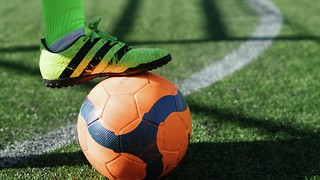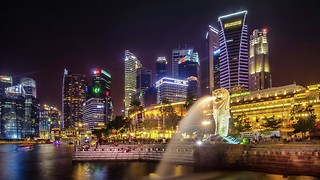Exhibition: Eadweard Muybridge
Tate Britain, 8 September 2010 – 16 January 2011 (£10/£6)

It is tempting, in the age of photojournalism and mass media, to view even the most compelling photographic images as products more of documentary technology than artistic genius. Eadweard Muybridge (1830-1904), working at the vanguard of photography in the late 19th century, faced a very different set of challenges to the modern photographer. In his early work documenting the dramatic landscape of the American West, the final result of a few dozen black and white photos looks deceptively banal to modern eyes: waterfalls, canyons, touristic beauty-spots and scenic views. We forget that behind these images is a man who hiked through uninhabited mountainous terrains with an entire photographic studio, complete with chemicals, glass plates, and a makeshift darkroom, and dangled on ropes from a cliff face to achieve the perfect image.
Muybridge’s early landscape photography pushed the limits of contemporary technology, and he became adept at manipulating his images and indeed his photographic equipment. As an innovator, Muybridge’s most significant contribution was capturing animals in motion: he proved once and for all that a horse lifted all four hooves off the ground in mid-gallop. More seriously, his work on human movement influenced scientific research into diseases affecting the body’s ability to move, as it could be used by doctors to compare the healthy person’s motion to that of an unhealthy person. Muybridge’s Infantile paralysis; child, walking on hands and feet is both haunting and, unexpectedly, joyful. Likewise with the horse – it is not merely in motion – Muybridge has captured it flying across a grid-patterned sky.

The strange drama of this scientific photography emerges most entertainingly in a series on the movement of chickens, Frightening chickens with a torpedo, created when Muybridge was reduced to throwing a firecracker at the lazy birds in order to make them move. The ensuing chaos of feathers, flight and smoke makes an interesting counterpoint to the pseudo-fascistic romance of nude men fencing, wrestling and engaged in gymnastic pursuits, two ideas which then combine in a peculiar set of shots labelled Hand-spring, a flying pigeon interfering.
Successions of photographic frames documenting movement point towards cinematography and, perhaps inevitably, this is where Muybridge went next. Though sensational at the time, the arduous process of transferring images onto a flat glass wheel, which then was backlit and rotated in a special machine (the ‘zoopraxiscope’) to produce a 16-frame moving image now seems disappointing, given it comes from the forerunner of cinema. Indeed, the self-consciously ‘aesthetic’ film of a woman dancing was faintly comical in its repetitive small-mindedness.

I was somewhat disappointed that the Tate did not display the compelling Woman falling into a haystack. There was, however, a long glass panel in the wall by the exit that enabled visitors in the first room to see you walk in staggered motion, à la Muybridge’s subjects. As this only became apparent at the end, I then had to wait in the first room for someone to walk past on the other side of the wall. Unfortunately, this fascinating showcase was rather sparsely attended on a Monday morning, and my eventual subject was a dawdling and aged gentleman. Be sure to bring a friend and get them to run through as you watch. Yet this exhibition is one of the most eye-opening I have encountered in a long time, combining innovation and drama in refreshingly unexpected ways, and I encourage you to see it.
 News / Students form new left-wing society in criticism of CULC3 September 2025
News / Students form new left-wing society in criticism of CULC3 September 2025 News / Tompkins Table 2025: Trinity widens gap on Christ’s19 August 2025
News / Tompkins Table 2025: Trinity widens gap on Christ’s19 August 2025 News / Cambridge’s tallest building restored to former glory1 September 2025
News / Cambridge’s tallest building restored to former glory1 September 2025 News / Council rejects Wolfson’s planned expansion28 August 2025
News / Council rejects Wolfson’s planned expansion28 August 2025 Interviews / GK Barry’s journey from Revs to Reality TV31 August 2025
Interviews / GK Barry’s journey from Revs to Reality TV31 August 2025








